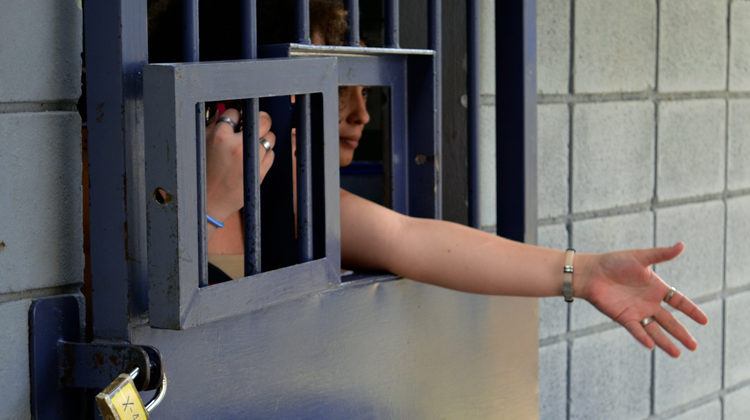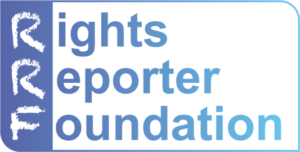How does the war on drugs affect women? Is it really so different from how it affects men? Our knowledge was very limited before we interviewed the participants of an international workshop in Budapest. Please watch our video report and read our article!
It was impressive to enter a room full of women – actually only women, both in the audience and on the speakers’ podium. I have never been at a female-only workshop before I came to interview the participants of a workshop on the gendered impacts of the war on drugs in Budapest, organised by the CEU School of Public Policy. For a moment I could empathise with those women who join a workshop full of males. Of course what I felt was amusement, whereas what they feel is more like intimidation in a world dominated by men.
In this world, as feminists say, almost every phenomena in our political, social, and economic life is constructed from the male perspective. The war on drugs is not an exception. The notion that there are overlooked gendered impacts of the war on drugs seems obvious.
But how significant are those impacts? Frankly, I was not sure before I came to this workshop. Of course I knew that women who use drugs have some specific needs – but if you look at the statistics, it is predominantly young males who use drugs who are arrested and incarcerated because of their drug offences. So why is there so much fuss about the gendered impacts of the drug war?
I was surprised to learn from female academic researchers and activists gathered here from all over the world that there are so many really burning issues worthy of our attention, including but not limited to those listed below (read a comprehensive IDPC report here!).
RAPID INCREASE OF INCARCERATED WOMEN
While it’s true that the majority of those who are imprisoned for drug offences are male, the number of women imprisoned for drug offences is increasing rapidly, especially in Asia and Latin-America. In some countries the vast majority of female prisoners are incarcerated for low level drug offences. Which means that in some prisons the majority of women are being punished for a victimless crime and should not be behind bars.
GENDER INEQUALITIES IN THE DRUG MARKET
Just like in almost all areas of life, gender inequalities are manifested in the illicit drug market too: while you don’t find many women among the drug lords and kingpins, there are many women among low level pushers and mules who try to escape poverty and support their families. Being on the bottom of the trafficking chain makes them extremely vulnerable to violence and abuse from both traffickers and the criminal justice system.
GENDER BIAS OF ERADICATION PROGRAMS
I’ve learnt that in Latin-America many women actively participate in the family business of growing coca, which gives them a certain level of prestige and financial independence. However, when the government eradicates coca cultivations, they become more dependent on and vulnerable to their male family members. And if the government gives compensation, it gives it only to the male heads of households.
BARRIERS TO ACCESSING SERVICES FOR WOMEN
A recurring theme among the interviewees was that women have much lower access to drug treatment and harm reduction services as men do. Why? One of the key barriers is that women who use drugs don’t feel safe and at home in programs where the majority of clients are males, often including their abusive partners or men with sexist prejudices. Marginalised women who are the most in need of care were often traumatised in their childhood or youth, this is causing mental problems that must be addressed by service providers. Another huge barrier is that many women who use drugs have children. These mothers are afraid to lose custody of these children and/or nobody can take care of their children while they use services. There is a need for gender sensitive services that provide a protected space for women and their children, as well as specific hygienic equipment and family counselling services.
VIOLENCE
Many women who use drugs are victims of domestic violence or police abuse, especially those who live on the peripheries of society. Local communities must be mobilised and organised to address this violence, and to build partnerships with local police with training and legal aid programs. Incarcerated women are especially vulnerable to violence – and as I said, most women should not be imprisoned in the first place. Therefore to fight violence means to fight for criminal justice and drug law reform.
DRUG USE DURING PREGNANCY
Women who use drug face many problems when they get pregnant. In some countries they face imprisonment for harming their children, in other countries they face exclusion and stigma from the health and social care system. They often don’t seek help because they are afraid to lose custody of their children. We need special programs supporting pregnant women who use drugs instead of stigmatising and punishing them.
There are many more issues mentioned in the video we produced, so please watch it and share it! It is telling that it was not the intention of the organisers to only invite female participants, but they ended up with a female-only workshop because it is only women who have undertaken research into the gendered impacts of the war on drugs. This has to be changed. This issue is far too important to reduce to a “women-issue” which men usually avoid and relegate to women’s magazines. Policymakers, service providers, researchers, and activists – whatever you do, please do consider the gender dimensions of it!
Film: István Gábor Takács and Peter Sarosi
Article: Peter Sarosi
Interviewees: Julia Buxton, Gloria Lai, Claudia Stoicescu, Coletta Youngers, Jane Slater, Dasha Matyhushina-Ocheret, Chontit Chuenurah, Fiona Gilberson




